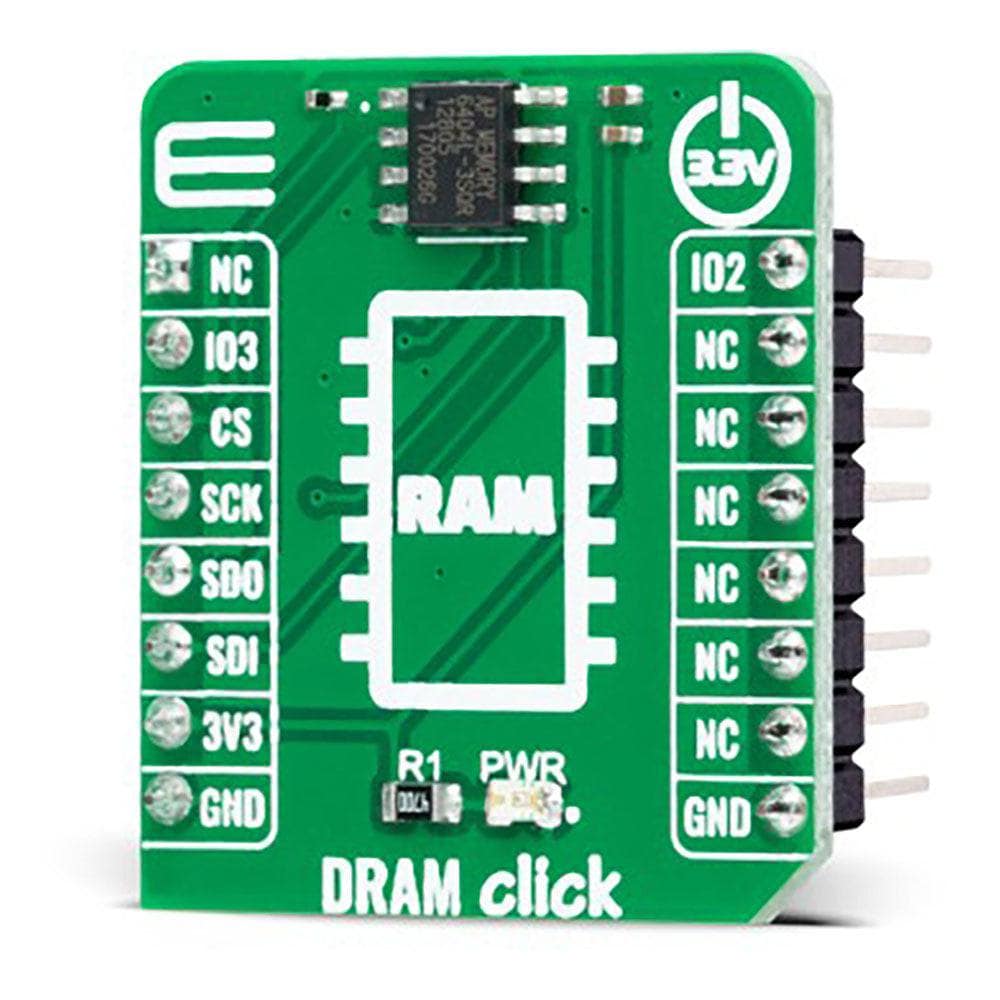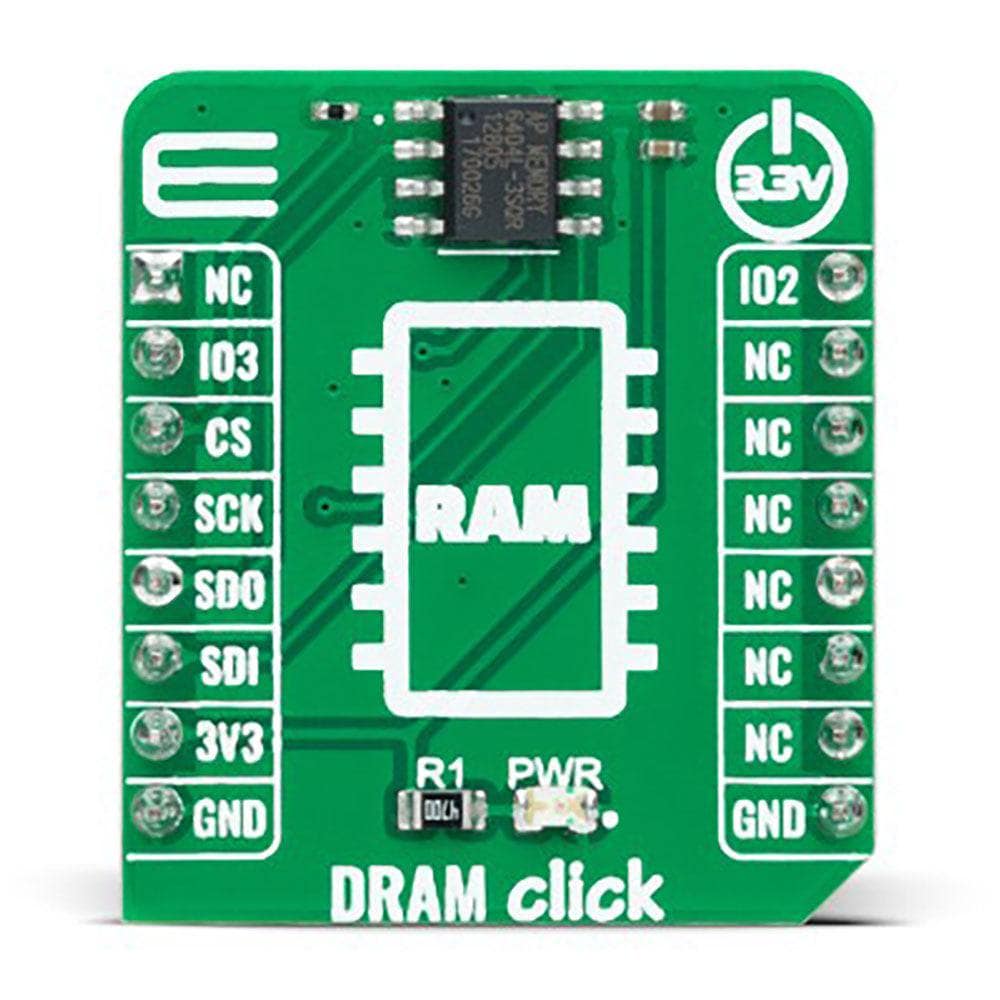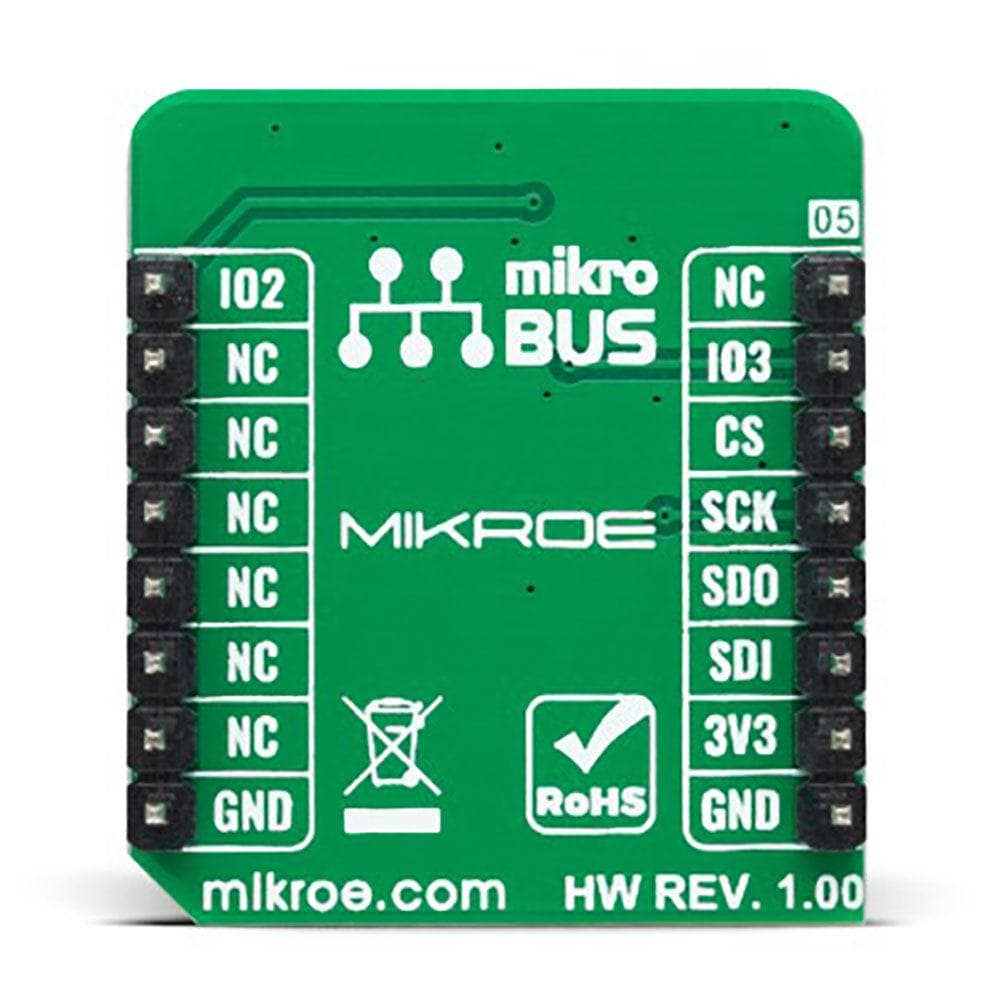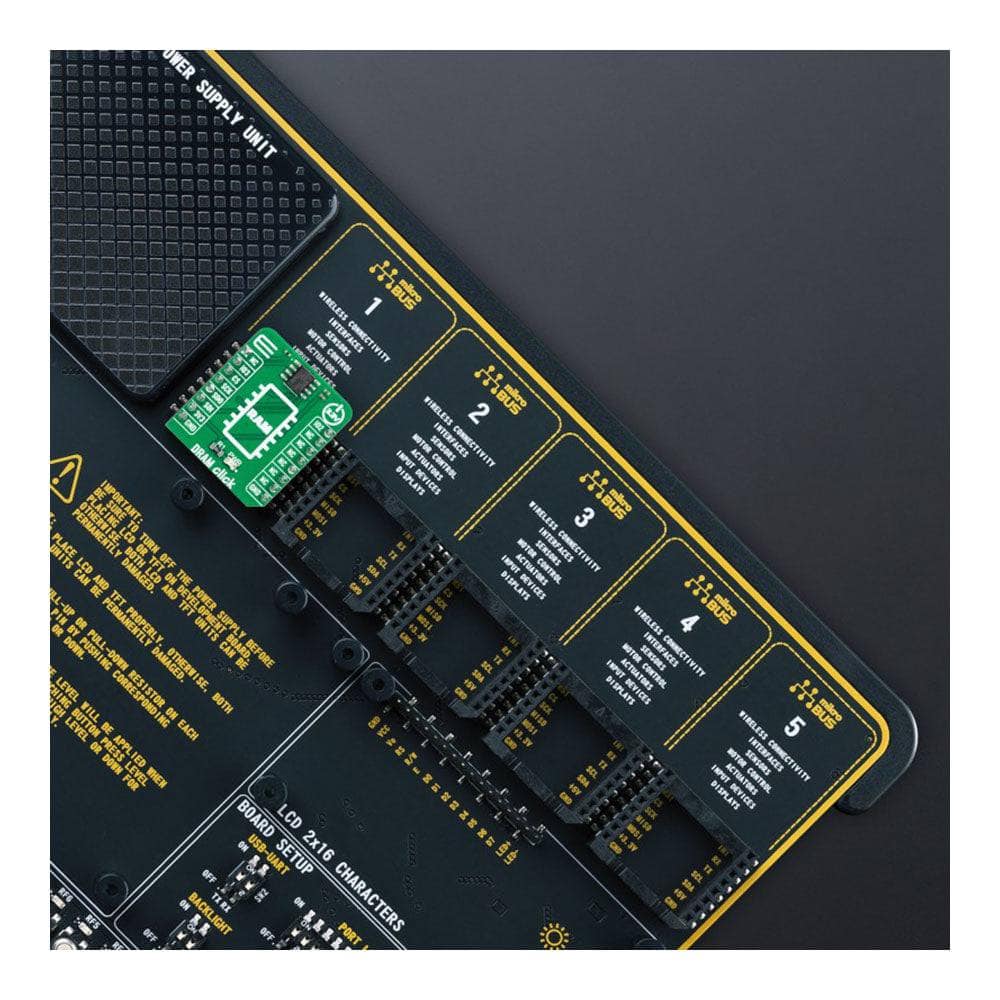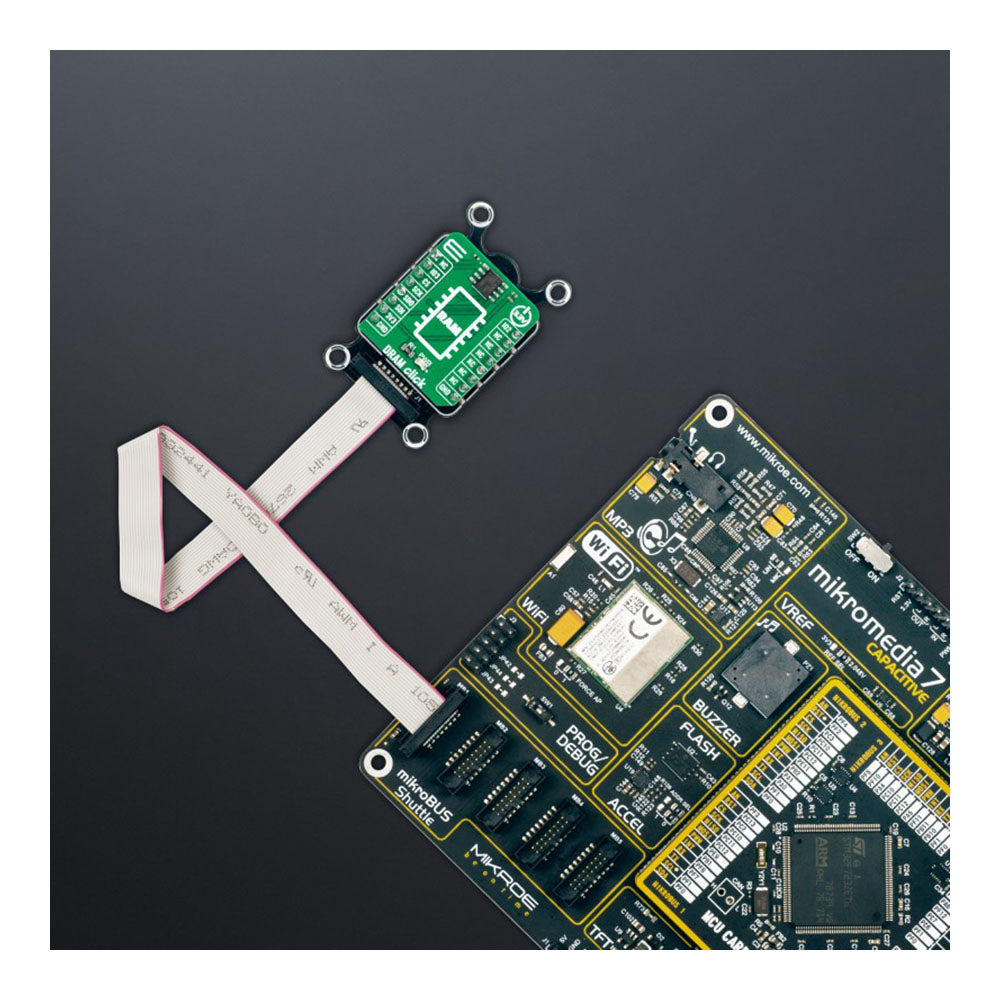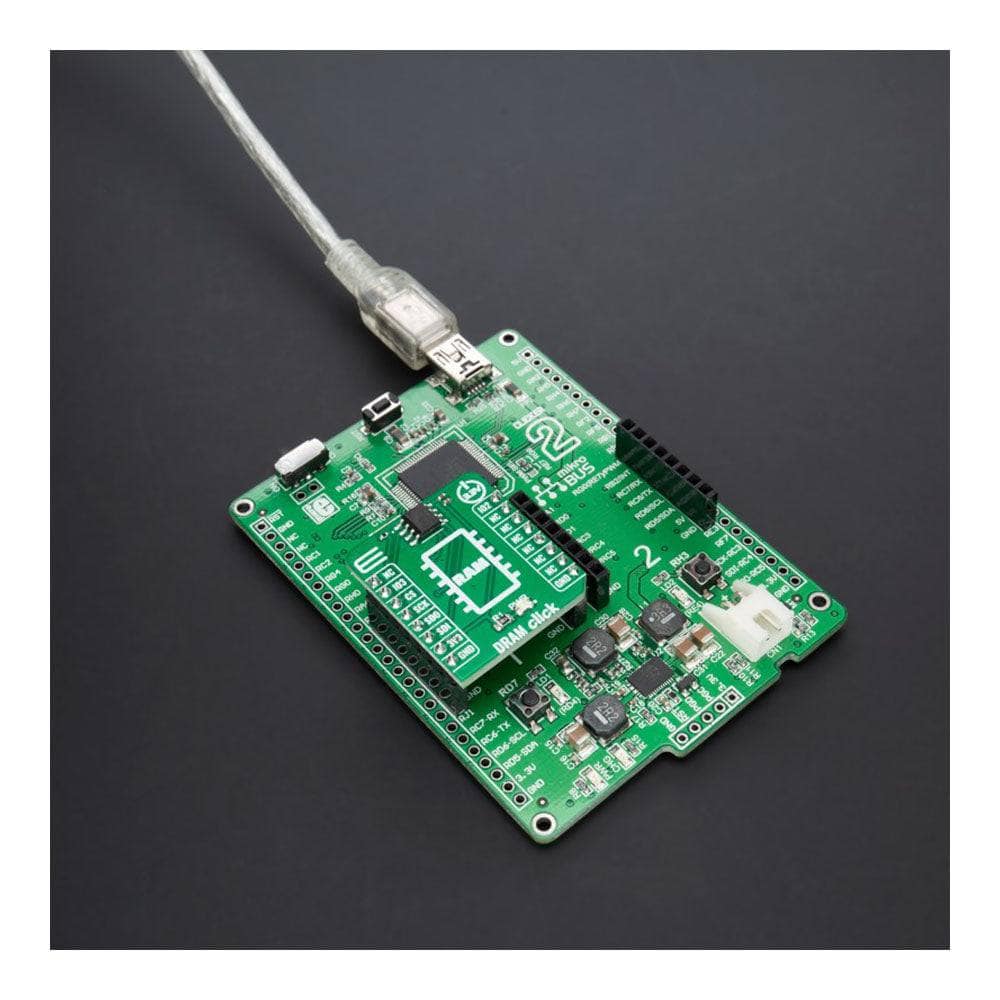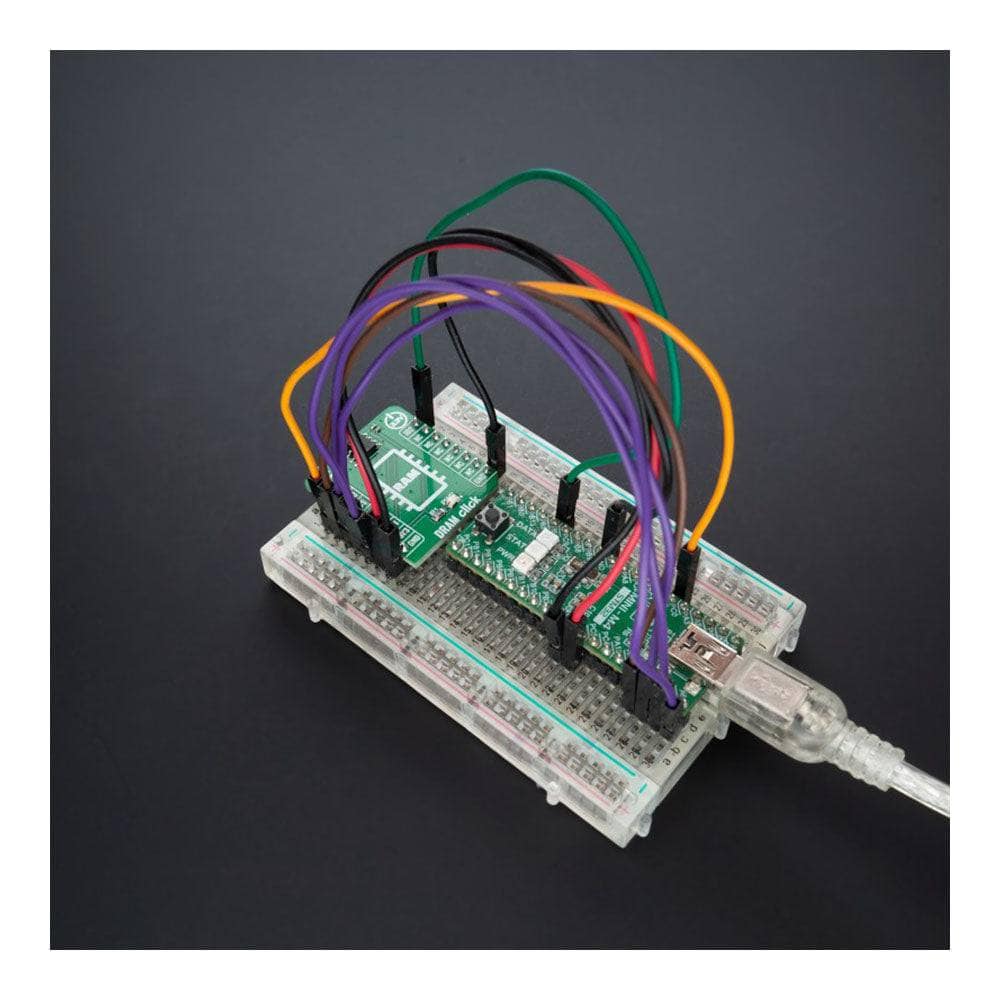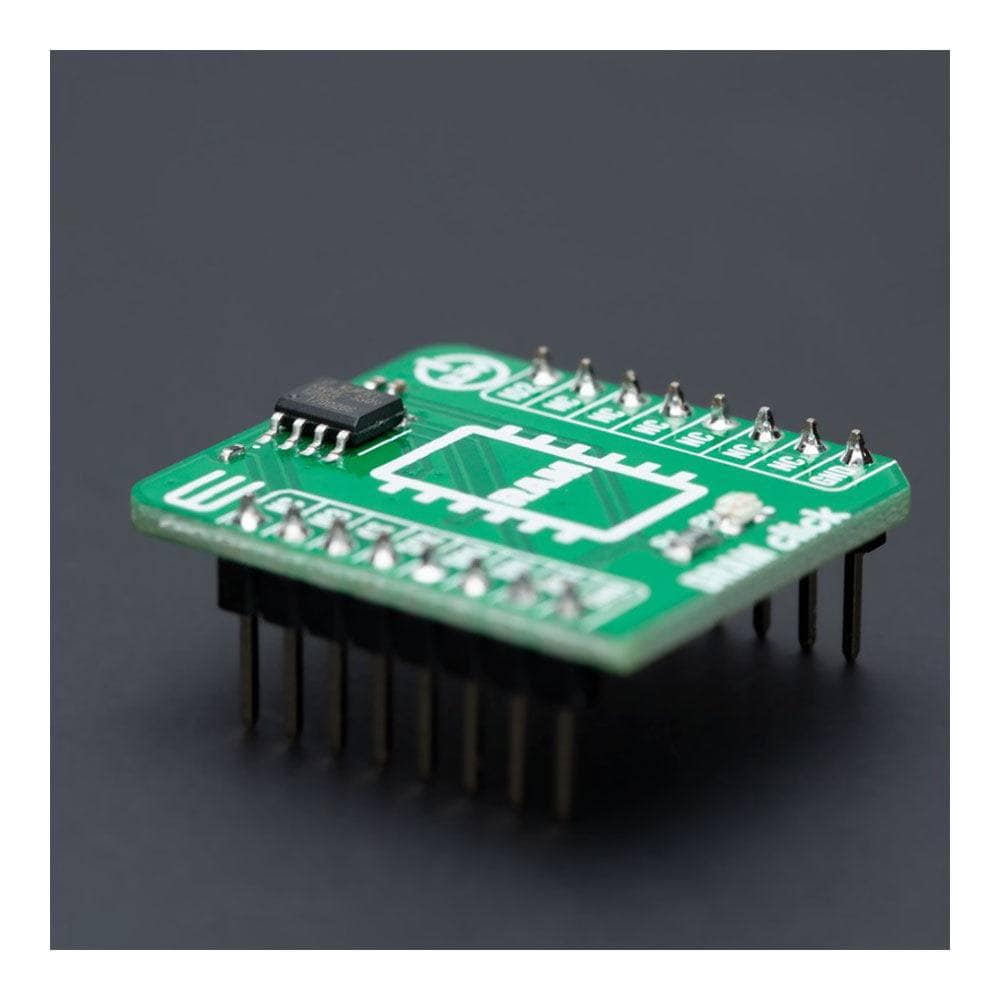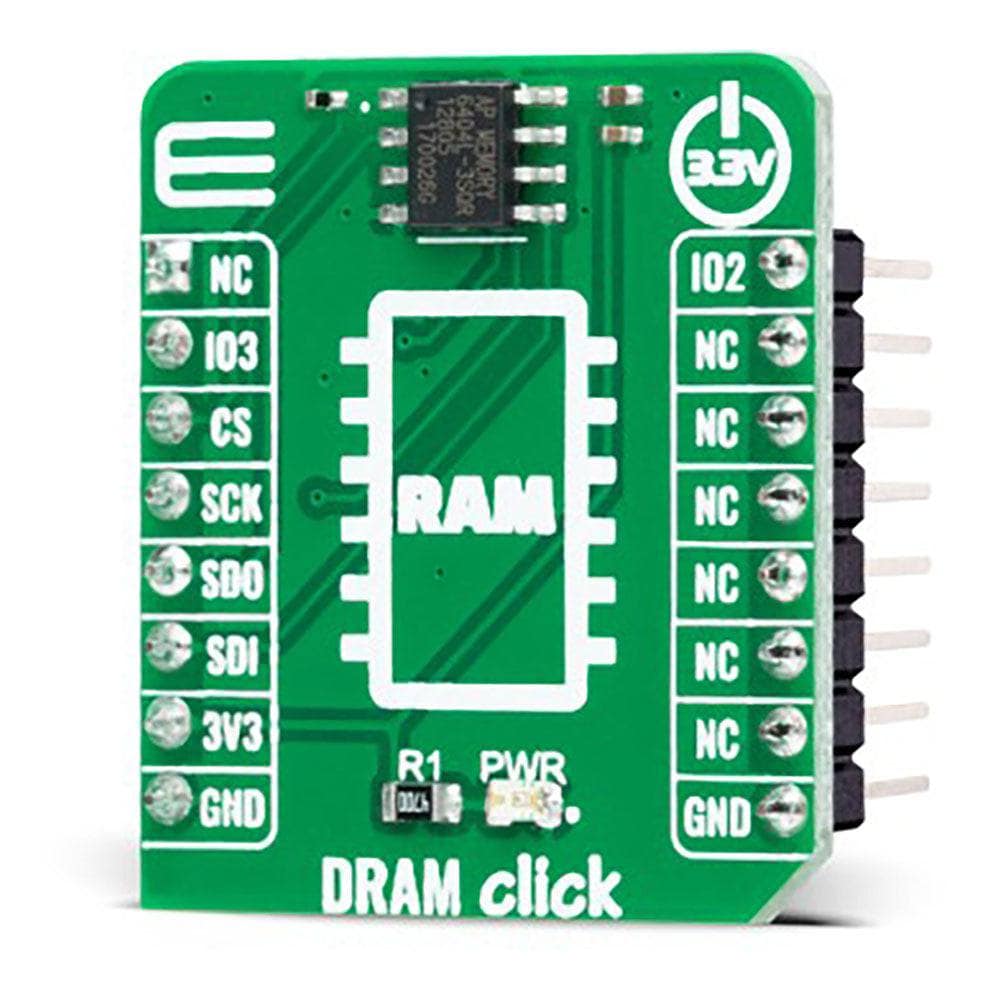
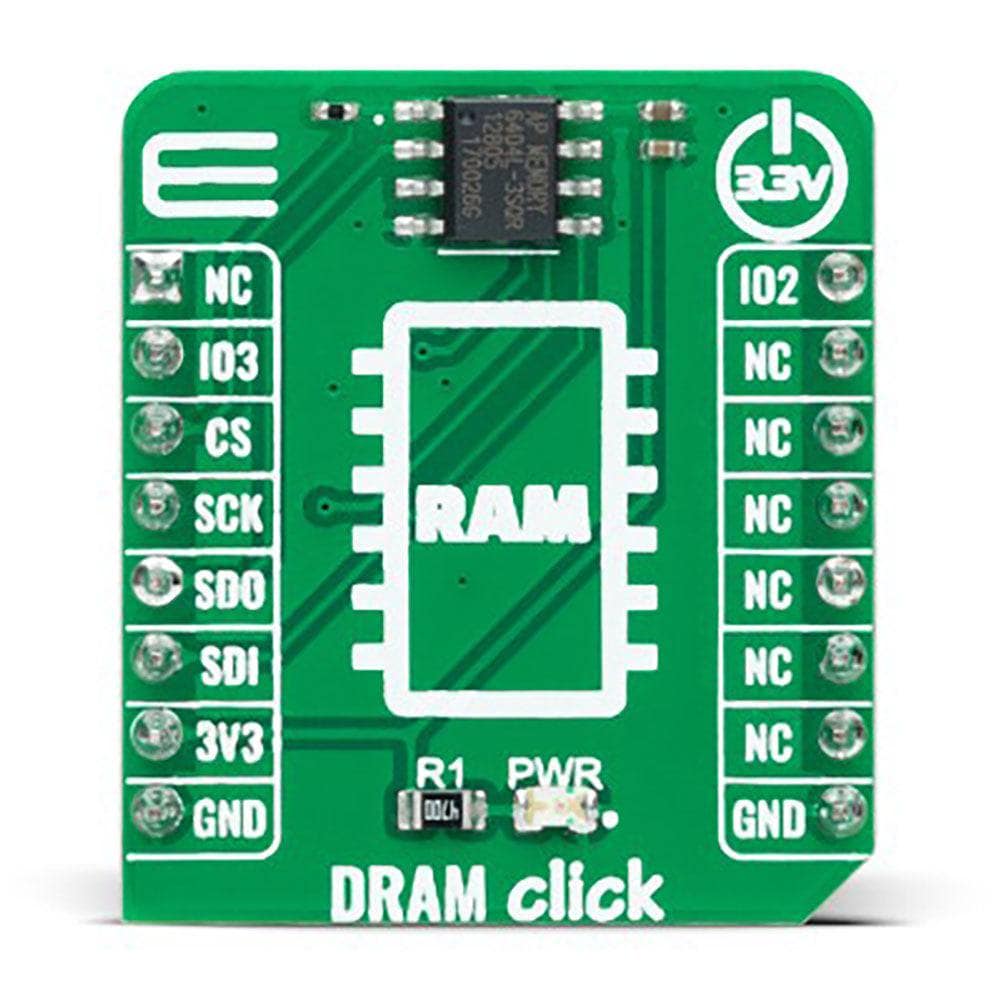
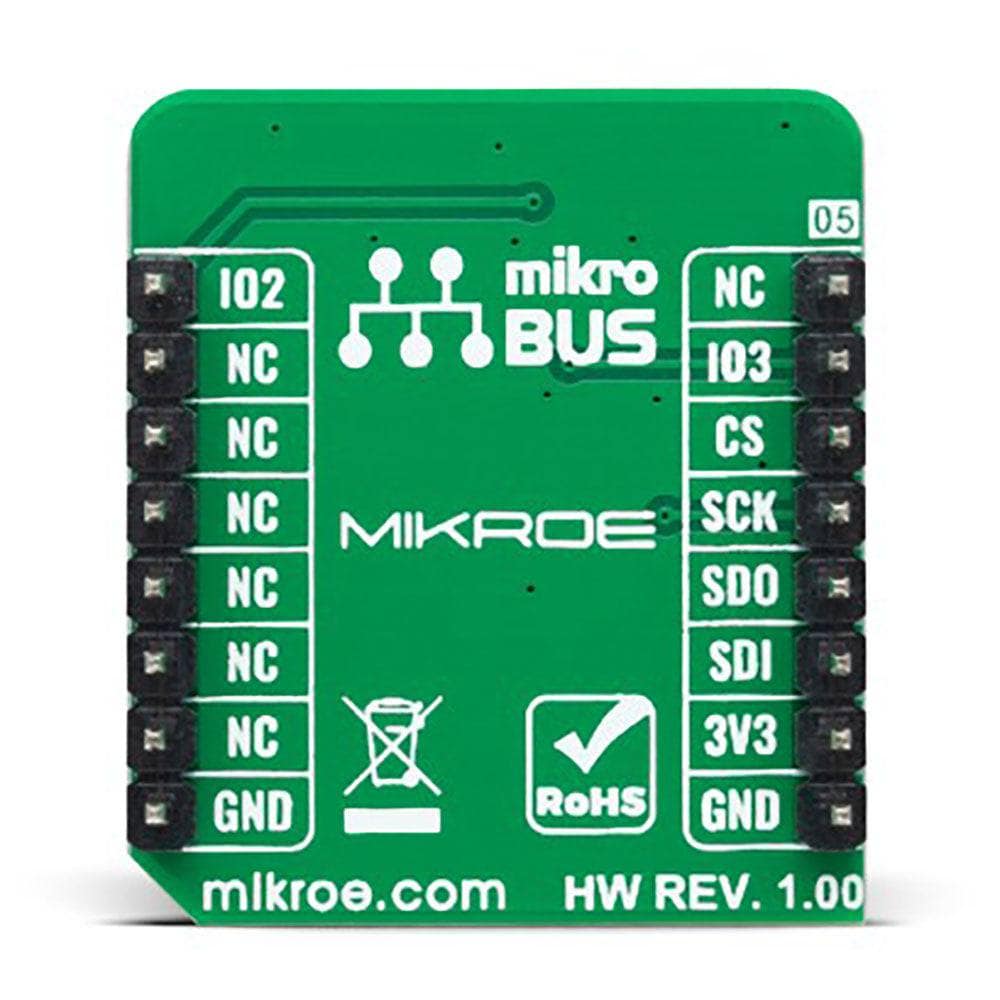
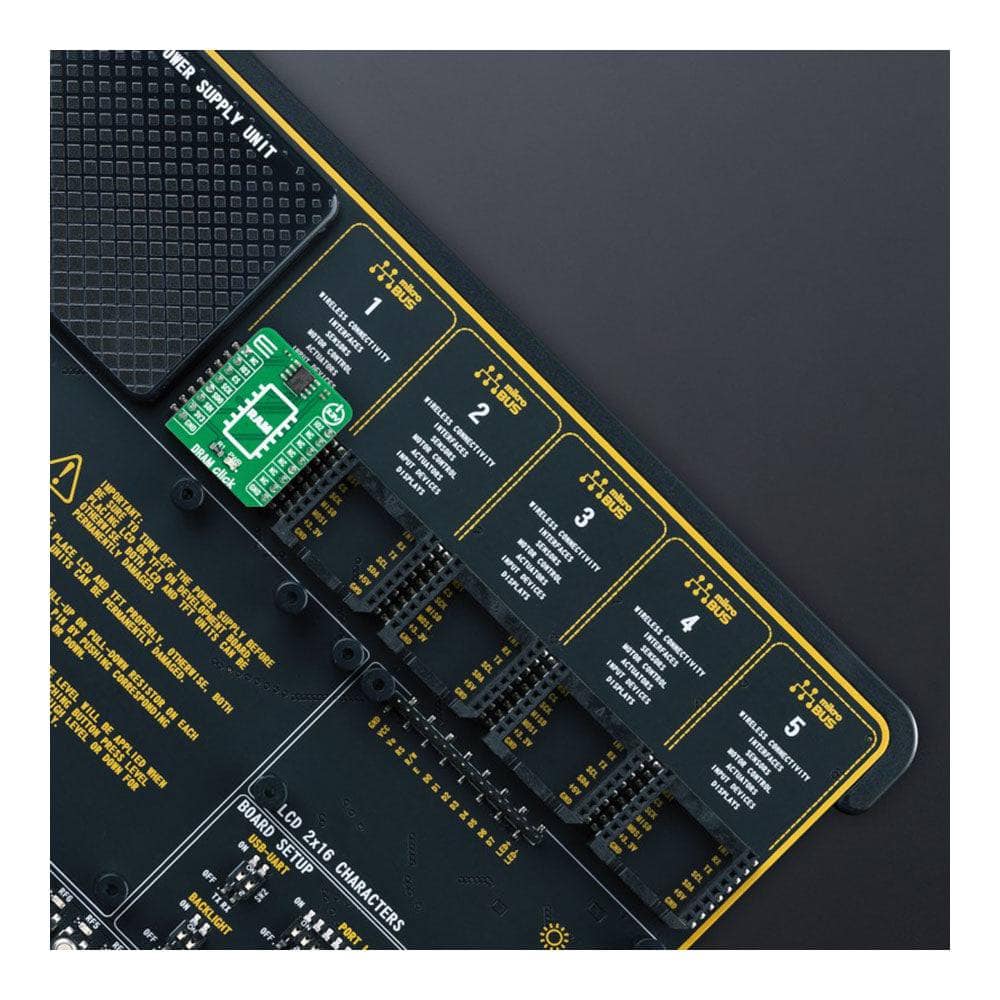
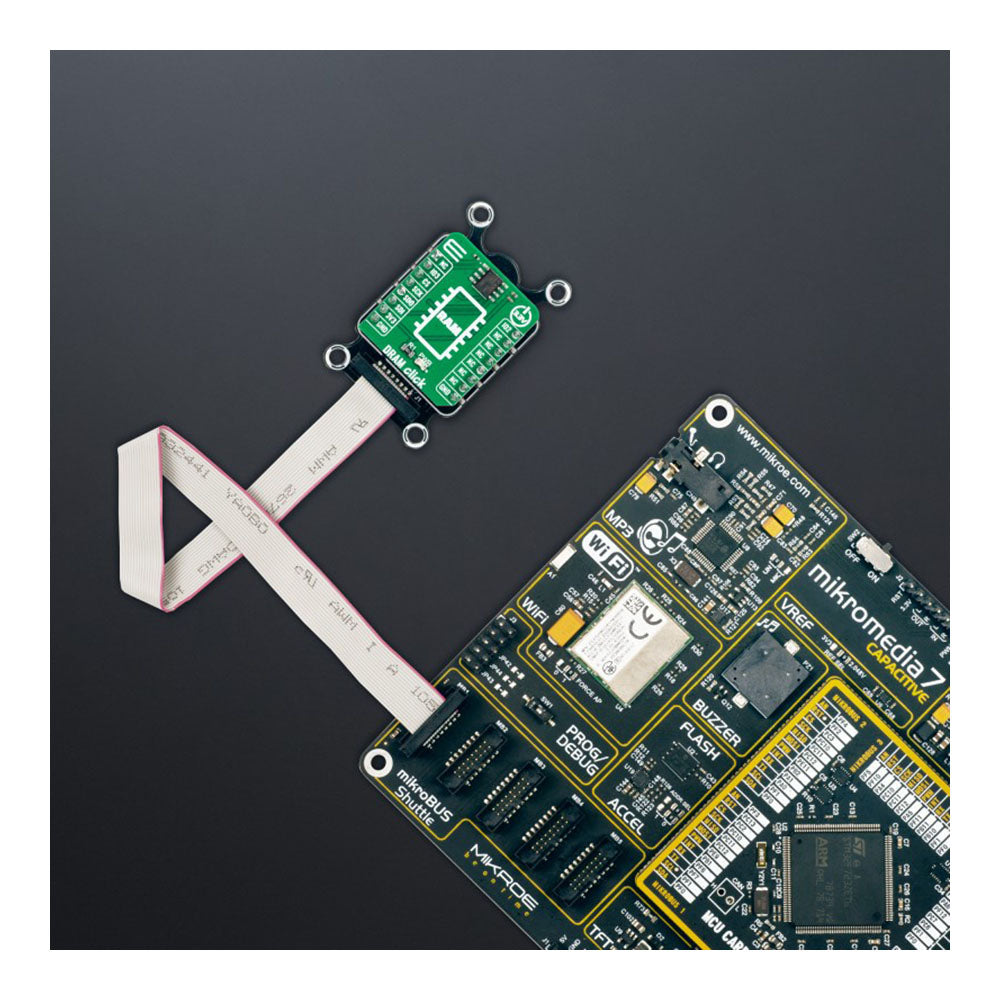
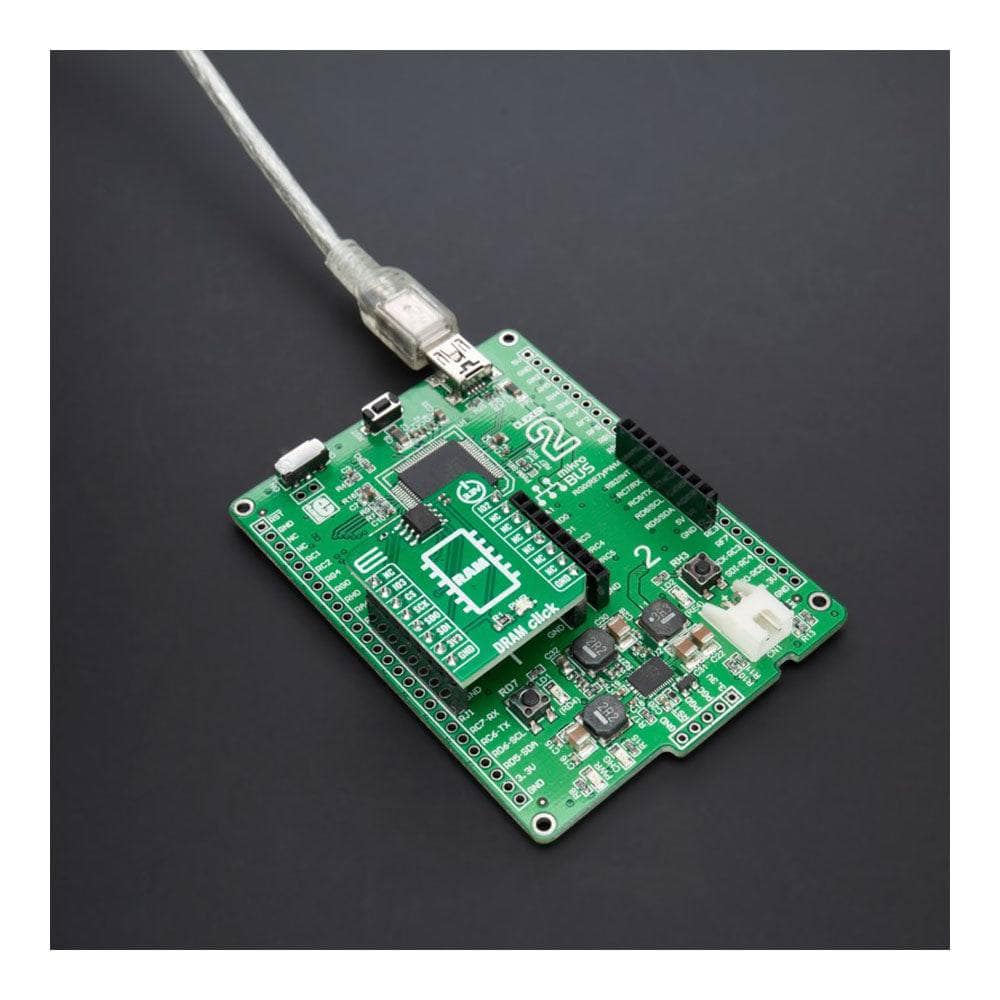
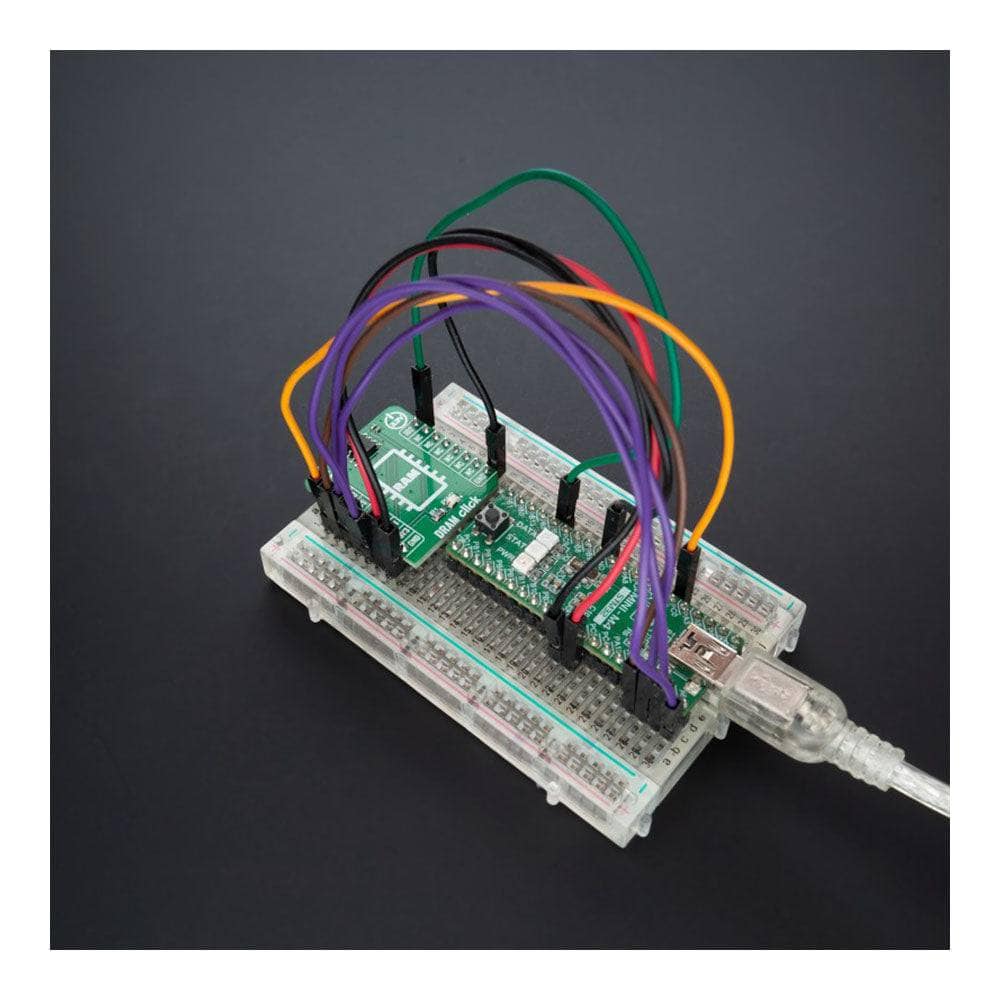
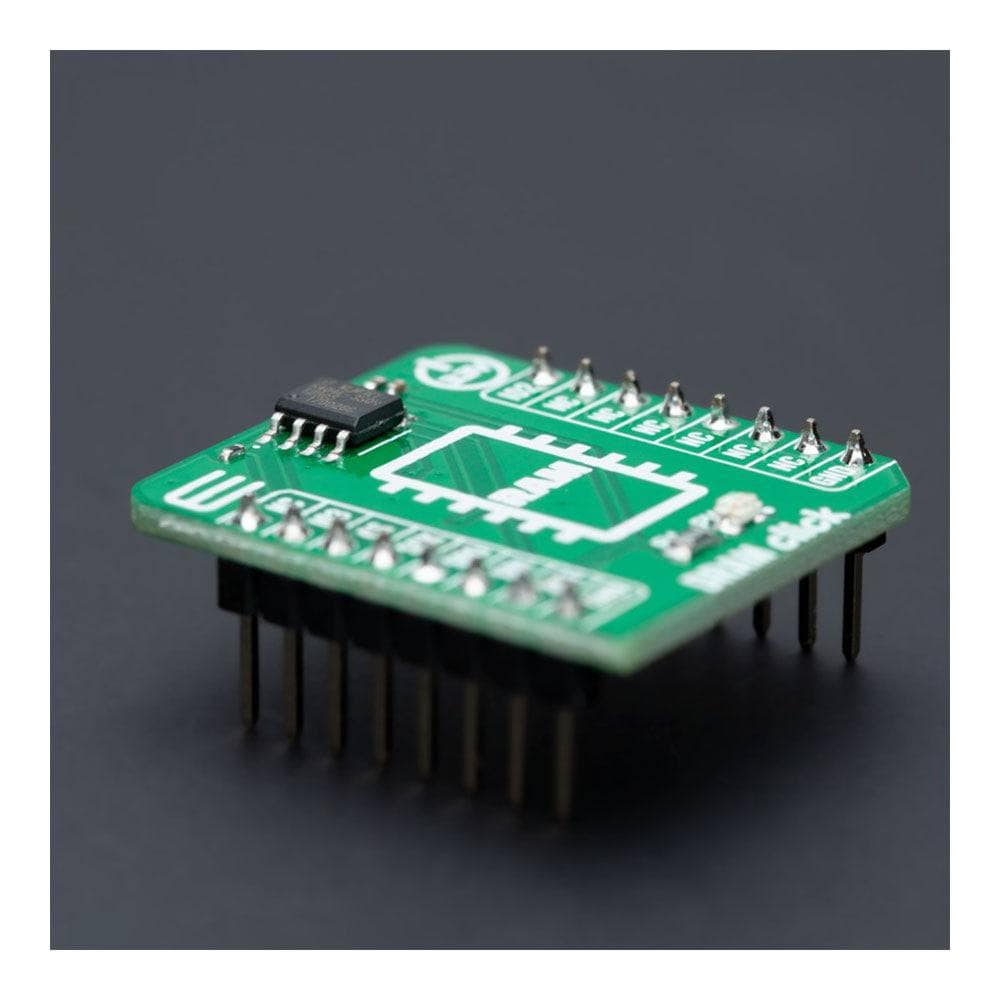
Key Features
Overview
Introducing the DRAM Click Board™
Upgrade your device's memory with the DRAM Click Board™, a compact add-on board representing a dynamic random-access memory solution. This board features the APS6404L-3SQR, 64Mb high-performance SPI/QPI PSRAM memory organized as 8M x 8 bits each from AP Memory.
High Performance and Low Power Consumption
The Pseudo-SRAM device of the DRAM Click Board™ features a high speed, low pin count interface and incorporates a seamless self-managed refresh mechanism to maximize the performance of memory read operation. With 4 SDR I/O pins and the ability to operate in SPI or QPI (quad peripheral interface) mode with frequencies up to 133 MHz, this Click board™ is most suitable for low-power and low-cost portable applications.
Simple Integration and Software Development
The DRAM Click Board™ is supported by a mikroSDK-compliant library, which includes functions that simplify software development. This Click board™ comes as a thoroughly tested product, ready to be used on a system equipped with the mikroBUS™ socket.
Upgrade your device's memory capabilities today with the DRAM Click Board™.
Downloads
How Does The DRAM Click Board™ Work?
The DRAM Click Board™ is based on the APS6404L-3SQR, a 64Mb PSRAM (Pseudo-Static RAM) memory with an SPI/QPI interface from AP Memory. Organized as 8M x 8 bits each, this memory also has a page size of 1024 bytes alongside high speed and high performance. It also incorporates a seamless self-managed refresh mechanism specially designed to maximize the performance of memory read operation (it does not require the support of DRAM refresh from the system host). It is most suitable for low-power and low-cost portable applications.
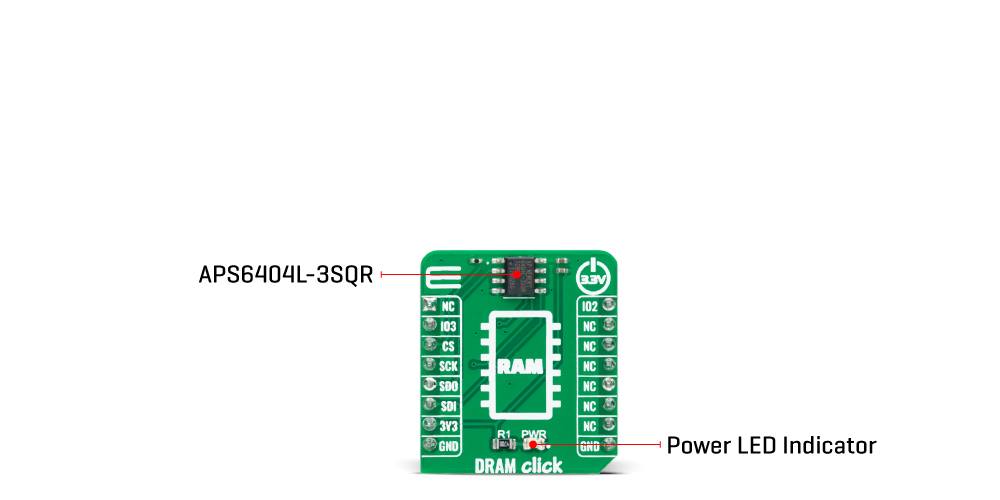
The APS6404L-3SQR communicates with MCU using the SPI serial interface that also supports Quad SPI and the two most common modes, SPI Mode 0 (QSPI Mode 1), with a maximum SPI frequency of 133MHz. The APS6404L-3SQR includes an on-chip voltage sensor used to start the self-initialization process. When the main power supply voltage reaches a stable level at or above the minimum supply voltage level, the device will require 150μs and user-issued RESET Operation to complete its self-initialization process. The device powers up in SPI Mode by default configuration but can also be switched into QPI mode. Besides, it is required to have a CS pin on a high logic level before beginning any operations.
The DRAM Click Board™ can be operated only with a 3.3V logic voltage level. The board must perform appropriate logic voltage level conversion before using MCUs with different logic levels. However, the Click board™ comes equipped with a library containing functions and an example code that can be used, as a reference, for further development.
SPECIFICATIONS
| Type | DRAM |
| Applications | Can be used for low-power and low-cost portable applications |
| On-board modules | APS6404L-3SQR - 64Mb PSRAM (Pseudo-SRAM) memory from AP Memory |
| Key Features | Low power consumption, SPI/QPI with SDR mode, high performance, organized as 8M x 8bits, page size of 1024 bytes, self-managed refresh mechanism, software reset, and more |
| Interface | QSPI,SPI |
| Compatibility | mikroBUS |
| Click board size | S (28.6 x 25.4 mm) |
| Input Voltage | 3.3V |
PINOUT DIAGRAM
This table shows how the pinout of the DRAM Click Board™ corresponds to the pinout on the mikroBUS™ socket (the latter shown in the two middle columns).
| Notes | Pin |  |
Pin | Notes | |||
|---|---|---|---|---|---|---|---|
| NC | 1 | AN | PWM | 16 | IO2 | QSPI IO2 | |
| QSPI IO3 | IO3 | 2 | RST | INT | 15 | NC | |
| SPI Chip Select | CS | 3 | CS | RX | 14 | NC | |
| SPI Clock | SCK | 4 | SCK | TX | 13 | NC | |
| SPI Data OUT / QSPI IO1 | SDO | 5 | MISO | SCL | 12 | NC | |
| SPI Data IN / QSPI IO0 | SDI | 6 | MOSI | SDA | 11 | NC | |
| Power Supply | 3.3V | 7 | 3.3V | 5V | 10 | NC | |
| Ground | GND | 8 | GND | GND | 9 | GND | Ground |
ONBOARD SETTINGS AND INDICATORS
| Label | Name | Default | Description |
|---|---|---|---|
| LD1 | PWR | - | Power LED Indicator |
DRAM CLICK ELECTRICAL SPECIFICATIONS
| Description | Min | Typ | Max | Unit |
|---|---|---|---|---|
| Supply Voltage | - | 3.3 | - | V |
| Memory Size | - | - | 64 | Mb |
| Operating Temperature Range | -25 | +25 | +85 | °C |
| General Information | |
|---|---|
Part Number (SKU) |
MIKROE-5337
|
Manufacturer |
|
| Physical and Mechanical | |
Weight |
0.02 kg
|
| Other | |
Country of Origin |
|
HS Code Customs Tariff code
|
|
EAN |
8606027387111
|
Warranty |
|
Frequently Asked Questions
Have a Question?
Be the first to ask a question about this.

